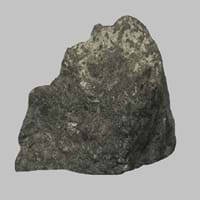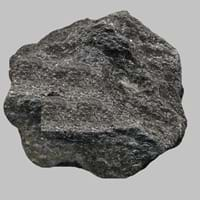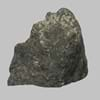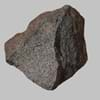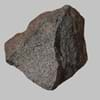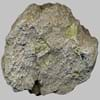Definition
Phonolite is an uncommon extrusive igneous rock volcanic rock of intermediate chemical composition between felsic and mafic
A ganister is a hard, fine-grained quartzose sandstone or orthoquartzite which is basically used in the manufacture of silica brick typically used to line furnaces and is a type of sedimentary rocks.
Discoverer
Unknown
Unknown
Etymology
From the Greek meaning sounding stone because of the metallic sound it produces if an unfractured plate is hit
From gan′is-ter i.e a hard, close-grained siliceous stone, often forming the stratum which underlies a coal-seam
Class
Igneous Rocks
Sedimentary Rocks
Sub-Class
Durable Rock, Medium Hardness Rock
Durable Rock, Hard Rock
Group
Not Applicable
Not Applicable
Other Categories
Fine Grained Rock, Opaque Rock
Coarse Grained Rock, Fine Grained Rock, Opaque Rock
Texture
Granular
Clastic, Granular, Rough
Color
Brown, Buff, Cream, Green, Grey, Pink, White
Beige, Black, Brown, Colourless, Cream, Dark Brown, Green, Grey, Light Green, Light to Dark Grey, Pink, Red, White, Yellow
Durability
Durable
Durable
Scratch Resistant
Yes
Yes
Appearance
Banded and Foilated
Rough
Interior Uses
Countertops, Decorative Aggregates, Flooring, Homes
Decorative Aggregates, Entryways, Flooring, Homes, Interior Decoration
Exterior Uses
As Building Stone, As Facing Stone, Garden Decoration, Office Buildings, Paving Stone
As Building Stone, Garden Decoration, Office Buildings, Paving Stone
Other Architectural Uses
Curbing
Curbing
Construction Industry
As Dimension Stone, Cement Manufacture, Construction Aggregate, for Road Aggregate, Landscaping, Making natural cement, Manufacture of Magnesium and Dolomite Refractories, Production of Glass and Ceramics
Cement Manufacture, Construction Aggregate, for Road Aggregate, Production of Glass and Ceramics, Raw material for the manufacture of mortar
Medical Industry
Not Yet Used
Not Yet Used
Antiquity Uses
Artifacts, Monuments, Sculpture
Artifacts, Monuments, Sculpture, Small Figurines
Commercial Uses
Cemetery Markers, Creating Artwork
An Oil and Gas Reservoir, In aquifers, Petroleum reservoirs, Soil Conditioner, Source of Magnesia (MgO), Tombstones
Types
Kenyte
Not Available
Features
Application of acids on the surface causes cloudy frosting, Available in Lots of Colors and Patterns, Dissolves in hydrochloric acid, Is one of the oldest rock
Available in Lots of Colors and Patterns, Generally rough to touch, Very fine grained rock
Archaeological Significance
Famous Monuments
Data Not Available
Data Not Available
Famous Sculptures
Data Not Available
Data Not Available
Pictographs
Used
Not Used
Petroglyphs
Used
Not Used
Formation
Phonolite are formed due to alkaline igneous activities and are generally formed in thick continental crustal areas or in Cordilleran subduction zones.
Ganisters are formed by the destruction of easily weathered minerals mainly feldspar, within the surface horizon of soil by soil-forming processes.
Mineral Content
Albite, Amphibole, Biotite, Cancrinite, Feldspar, Hornblende, Plagioclase, Pyroxene, Sodalite
Calcite, Clay, Clay Minerals, Feldspar, Micas, Quartz
Compound Content
Aluminium Oxide, CaO, Iron(III) Oxide, FeO, Potassium Oxide, MgO, MnO, Sodium Oxide, Phosphorus Pentoxide, Silicon Dioxide, Titanium Dioxide
Aluminium Oxide, CaO, Iron(III) Oxide, Potassium Oxide, MgO, Sodium Oxide, Silicon Dioxide
Types of Metamorphism
Contact Metamorphism
Not Applicable
Types of Weathering
Chemical Weathering, Mechanical Weathering
Biological Weathering
Types of Erosion
Chemical Erosion, Coastal Erosion, Water Erosion, Wind Erosion
Water Erosion, Wind Erosion
Grain Size
Fine Grained
Coarse or Fine
Fracture
Conchoidal to Uneven
Splintery
Porosity
Less Porous
Highly Porous
Luster
Greasy to Dull
Dull
Toughness
Not Available
2.6
Specific Gravity
2.6
2.2-2.8
Transparency
Translucent to Opaque
Opaque
Density
2.6 g/cm3
2.2-2.8 g/cm3
Specific Heat Capacity
Not Available
Resistance
Heat Resistant, Impact Resistant, Wear Resistant
Heat Resistant, Impact Resistant, Pressure Resistant
Deposits in Eastern Continents
Asia
Indonesia, Iran, Russia, Saudi Arabia, Sri Lanka, Taiwan, Thailand, Turkey, Turkmenistan, Vietnam
China, India, Kazakhstan, Mongolia, Russia, Uzbekistan
Africa
Angola, Egypt, Madagascar, Namibia, Nigeria, South Africa
Namibia, Nigeria, South Africa
Europe
Andorra, Finland, France, Germany, Great Britain, Italy, Norway, Portugal, Spain, Sweden
Austria, Denmark, Germany, Great Britain, Netherlands, Norway, Poland, Sweden, Switzerland, United Kingdom
Others
Greenland
Greenland
Deposits in Western Continents
North America
Canada, USA
Canada, USA
South America
Brazil, Chile, Colombia, Uruguay, Venezuela
Brazil
Deposits in Oceania Continent
Australia
New Zealand, Queensland, South Australia, Tasmania, Western Australia
New South Wales, New Zealand
Phonolite vs Ganister Characteristics
Though some rocks look identical, they have certain characteristics which distinguish them from others. Characteristics of rocks include texture, appearance, color, fracture, streak, hardness etc. Phonolite vs Ganister characteristics assist us to distinguish and recognize rocks. Also you can check about Properties of Phonolite and Properties of Ganister. Learn more about Phonolite vs Ganister in the next section. The interior uses of Phonolite include Countertops, Decorative aggregates, Flooring and Homes whereas the interior uses of Ganister include Decorative aggregates, Entryways, Flooring, Homes and Interior decoration. Due to some exceptional properties of Phonolite and Ganister, they have various applications in construction industry. The uses of Phonolite in construction industry include As dimension stone, Cement manufacture, Construction aggregate, For road aggregate, Landscaping, Making natural cement, Manufacture of magnesium and dolomite refractories, Production of glass and ceramics and that of Ganister include Cement manufacture, Construction aggregate, For road aggregate, Production of glass and ceramics, Raw material for the manufacture of mortar.
More about Phonolite and Ganister
Here you can know more about Phonolite and Ganister. The life cycle of a rock consists of formation of rock, composition of rock and transformation of rock. The composition of Phonolite and Ganister consists of mineral content and compound content. The mineral content of Phonolite includes Albite, Amphibole, Biotite, Cancrinite, Feldspar, Hornblende, Plagioclase, Pyroxene, Sodalite and mineral content of Ganister includes Calcite, Clay, Clay Minerals, Feldspar, Micas, Quartz. You can also check out the list of all Igneous Rocks. When we have to compare Phonolite vs Ganister, the texture, color and appearance plays an important role in determining the type of rock. Phonolite is available in brown, buff, cream, green, grey, pink, white colors whereas, Ganister is available in beige, black, brown, colourless, cream, dark brown, green, grey, light green, light to dark grey, pink, red, white, yellow colors. Appearance of Phonolite is Banded and Foilated and that of Ganister is Rough. Properties of rock is another aspect for Phonolite vs Ganister. The hardness of Phonolite is 5.5-6 and that of Ganister is 6-7. The types of Phonolite are Kenyte whereas types of Ganister are Not Available. Streak of rock is the color of powder produced when it is dragged across an unweathered surface. The streak of Phonolite and Ganister is white. The specific heat capacity of Phonolite is Not Available and that of Ganister is 0.92 kJ/Kg K. Depending on the properties like hardness, toughness, specific heat capacity, porosity etc., rocks are resistant to heat, wear, impact, etc.Phonolite is heat resistant, impact resistant, wear resistant whereas Ganister is heat resistant, impact resistant, pressure resistant.
